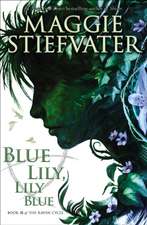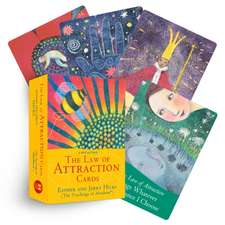The Art of Travel
Autor Alain de Bottonen Limba Engleză Paperback – 30 apr 2004
Even as de Botton takes the reader along on his own peregrinations, he also cites such distinguished fellow-travelers as Baudelaire, Wordsworth, Van Gogh, the biologist Alexander von Humboldt, and the 18th-century eccentric Xavier de Maistre, who catalogued the wonders of his bedroom. The Art of Travel is a wise and utterly original book. Don’t leave home without it.
| Toate formatele și edițiile | Preț | Express |
|---|---|---|
| Paperback (2) | 69.44 lei 26-32 zile | +25.33 lei 10-14 zile |
| Penguin Books – 26 mar 2014 | 69.44 lei 26-32 zile | +25.33 lei 10-14 zile |
| Vintage Publishing – 30 apr 2004 | 96.93 lei 3-5 săpt. |
Preț: 96.93 lei
Nou
18.55€ • 19.25$ • 15.50£
Carte disponibilă
Livrare economică 22 februarie-08 martie
Specificații
ISBN-10: 0375725342
Pagini: 272
Ilustrații: HALFTONES THROUGHOUT
Dimensiuni: 132 x 203 x 14 mm
Greutate: 0.25 kg
Ediția:Vintage Intl.
Editura: Vintage Publishing
Notă biografică
Alain de Botton is the author of On Love, The Romantic Movement, Kiss and Tell, How Proust Can Change Your Life, The Consolations of Philosophy and, most recently, Status Anxiety. His work has been translated into twenty languages. He lives in London. More information can be found at www.alaindebotton.com.
Extras
1.
It was hard to say when exactly winter arrived. The decline was gradual, like that of a person into old age, inconspicuous from day to day until the season became an established, relentless reality. First came a dip in evening temperatures, then days of continuous rain, confused gusts of Atlantic wind, dampness, the fall of leaves and the changing of the clocks—though there were still occasional moments of reprieve, mornings when one could leave the house without a coat and the sky was cloudless and bright. But they were like false signs of recovery in a patient upon whom death has already passed its sentence. By December the new season was entrenched, and the city was covered almost every day by an ominous steel-grey sky, like one in a painting by Mantegna or Veronese, the perfect backdrop to the crucifixion of Christ or to a day beneath the bedclothes. The neighbourhood park became a desolate spread of mud and water, lit up at night by rain-streaked street lamps. Passing it one evening during a downpour, I recalled how, in the intense heat of the previous summer, I had stretched out on the ground and let my bare feet slip out of my shoes to caress the grass, and how this direct contact with the earth had brought with it a sense of freedom and expansiveness, summer breaking down the usual boundaries between indoors and out and allowing me to feel as much at home in the world as in my own bedroom.
But now the park was foreign once more, the grass a forbidding arena in the incessant rain. Any sadness I might have felt, any suspicion that happiness or understanding was unattainable, seemed to find ready encouragement in the sodden dark-red brick buildings and low skies tinged orange by the city's streetlights.
Such climatic circumstances, together with a sequence of events that occurred at around this time (and seemed to confirm Chamfort's dictum that a man must swallow a toad every morning to be sure of not meeting with anything more revolting in the day ahead), conspired to render me intensely susceptible to the unsolicited arrival one late afternoon of a large, brightly illustrated brochure entitled 'Winter Sun'. Its cover displayed a row of palm trees, many of them growing at an angle, on a sandy beach fringed by a turquoise sea, set against a backdrop of hills where I imagined there to be waterfalls and relief from the heat in the shade of sweet-smelling fruit trees. The photographs reminded me of the paintings of Tahiti that William Hodges had brought back from his journey with Captain Cook, showing a tropical lagoon in soft evening light, where smiling local girls cavorted carefree (and barefoot) through luxuriant foliage—images that had provoked wonder and longing when Hodges had first exhibited them at the Royal Academy in London in the sharp winter of 1776, and that continued to provide a model for subsequent depictions of tropical idylls, including those in the pages of 'Winter Sun'.
Those responsible for the brochure had darkly intuited how easily their audience might be turned into prey by photographs whose power insulted the intelligence and contravened any notions of free will: overexposed photographs of palm trees, clear skies and white beaches. Readers who would have been capable of scepticism and prudence in other areas of their lives reverted, in contact with these elements, to a primordial innocence and optimism. The longing provoked by the brochure was an example, at once touching and bathetic, of how projects (and even whole lives) might be influenced by the simplest and most unexamined images of happiness; of how a lengthy and ruinously expensive journey might be set into motion by nothing more than the sight of a photograph of a palm tree gently inclining in a tropical breeze.
I resolved to travel to the island of Barbados.
2.
If our lives are dominated by a search for happiness, then perhaps few activities reveal as much about the dynamics of this quest—in all its ardour and paradoxes—than our travels. They express, however inarticulately, an understanding of what life might be about, outside of the constraints of work and of the struggle for survival. Yet rarely are they considered to present philosophical problems—that is, issues requiring thought beyond the practical. We are inundated with advice on where to travel to, but we hear little of why and how we should go, even though the art of travel seems naturally to sustain a number of questions neither so simple nor so trivial, and whose study might in modest ways contribute to an understanding of what the Greek philosophers beautifully termed eudaimonia, or 'human flourishing'.
3.
One question revolves around the relationship between the anticipation of travel and its reality. I came upon a copy of J. K. Huysmans's novel A Rebours, published in 1884, whose effete andmisanthropic hero, the aristocratic Duc des Esseintes, anticipated a journey to London and offered in the process an extravagantly pessimistic analysis of the difference between what we imagine about a place and what can occur when we reach it.
Huysmans recounts that the Duc des Esseintes lived alone in a vast villa on the outskirts of Paris. He rarely went anywhere to avoid what he took to be the ugliness and stupidity of others. One afternoon in his youth, he had ventured into a nearby village for a few hours and had felt his detestation of people grow fierce. Since then he had chosen to spend his days alone in bed in his study, reading the classics of literature and moulding acerbic thoughts about humanity. Early one morning, however, the duc surprised himself by experiencing an intense wish to travel to London. The desire came upon him as he sat by the fire reading a volume of Dickens. The book evoked visions of English life, which he contemplated at length and grew increasingly keen to see. Unable to contain his excitement, he ordered his servants to pack his bags, dressed himself in a grey tweed suit, a pair of laced ankle boots, a little bowler hat and a flax-blue Inverness cape and took the next train to Paris. With some time to spare before the departure of the London train, he stopped in at Galignani's English Bookshop on the Rue de Rivoli and there bought a volume of Baedeker's Guide to London. He was thrown into delicious reveries by its terse descriptions of the city's attractions. Next he moved on to a nearby wine bar frequented by a largely English clientele. The atmosphere was out of Dickens: he thought of scenes in which Little Dorrit, Dora Copperfield and Tom Pinch's sister Ruth sat in similarly cosy, bright rooms. One patron had Mr Wickfield's white hair and ruddy complexion, combined with the sharp, expressionless features and unfeeling eyes of Mr Tulkinghorn.
Hungry, des Esseintes went next to an English tavern in the Rue d'Amsterdam, near the Gare Saint Lazare. It was dark and smoky inside, with a line of beer pulls along a counter spread with hams as brown as violins and lobsters the colour of red lead. Seated at small wooden tables were robust Englishwomen with boyish faces, teeth as big as palette knives, cheeks as red as apples and long hands and feet. Des Esseintes found a table and ordered some oxtail soup, a smoked haddock, a helping of roast beef and potatoes, a couple of pints of ale and a chunk of Stilton.
But as the moment to board his train approached, along with the chance to turn his dreams of London into reality, des Esseintes was abruptly overcome with lassitude. He thought how wearing it would be actually to make the journey—how he would have to run to the station, fight for a porter, board the train, endure an unfamiliar bed, stand in lines, feel cold and move his fragile frame around the sights that Baedeker had so tersely described—and thus soil his dreams: 'What was the good of moving when a person could travel so wonderfully sitting in a chair? Wasn't he already in London, whose smells, weather, citizens, food, and even cutlery were all about him? What could he expect to find over there except fresh disappointments?' Still seated at his table, he reflected, 'I must have been suffering from some mental aberration to have rejected the visions of my obedient imagination and to have believed like any old ninny that it was necessary, interesting and useful to travel abroad.'
So des Esseintes paid the bill, left the tavern and took the first train back to his villa, along with his trunks, his packages, his portmanteaux, his rugs, his umbrellas and his sticks—and never left home again.
4.
We are familiar with the notion that the reality of travel is not what we anticipate. The pessimistic school, of which des Esseintes might be an honorary patron, therefore argues that reality must always be disappointing. It may be truer and more rewarding to suggest that it is primarily different.
After two months of anticipation, on a cloudless February mid-afternoon, I touched down, along with my travelling companion, M., at Barbados's Grantley Adams Airport. It was a short walk from the plane to the low airport buildings, but long enough to register a revolution in the climate. In only a few hours, I had travelled to a heat and a humidity that at home I would not have felt for another five months, and that even in midsummer there never achieved such intensity.
Nothing was as I had imagined it, which is surprising only if one considers what I had imagined. In the preceding weeks, my thoughts of the island had circled exclusively around three immobile mental images, assembled during the reading of a brochure and an airline timetable. The first image was of a beach with a palm tree against the setting sun. The second was of a hotel bungalow with a view through French doors into a room decorated with wooden floors and white bedlinen. And the third was of an azure sky.
If pressed, I would naturally have recognised that the island had to include other elements, but I had not needed them in order to build an impression of it. My behaviour was like that of a theatregoer who imagines without difficulty that the actions on stage are unfolding in Sherwood Forest or ancient Rome because the backdrop has been painted with a single branch of an oak or one Doric pillar.
But on my actual arrival, a range of things insisted that they, too, deserved to be included within the fold of the word Barbados. For example, a large petrol storage facility, decorated with the yellow and green logo of British Petroleum, and a small plywood box where an immigration official sat in an immaculate brown suit and gazed with an air of curiosity and unhurried wonder (like a scholar scanning the pages of a manuscript in the stacks of a library) at the passports of a line of tourists that began to stretch out of the terminal and onto the edge of the airfield. There was an advertisement for rum above the baggage carousel, a picture of the prime minister in the customs corridor, a bureau de change in the arrivals hall and a confusion of taxi drivers and tour guides outside the terminal building. And if there was a problem with this profusion of images, it was that they made it strangely harder for me to see the Barbados I had come to find.
In my anticipation, there had simply been a vacuum between the airport and my hotel. Nothing had existed in my mind between the last line on the itinerary (the beautifully rhythmic 'Arrival BA 2155 at 15.35') and the hotel room. I had not envisioned, and now protested inwardly the appearance of, a luggage carousel with a frayed rubber mat; two flies dancing above an overflowing ashtray; a giant fan turning inside the arrivals hall; a white taxi with a dashboard covered in fake leopard skin; a stray dog in a stretch of waste ground beyond the airport; an advertisement for 'luxury condos' at a roundabout; a factory called Bardak Electronics; a row of buildings with red and green tin roofs; a rubber strap on the central pillar of the car, upon which was written in very small print 'Volkswagen, Wolfsburg'; a brightly coloured bush whose name I didn't know; a hotel reception area that showed the time in six different locations and a card pinned on the wall nearby that read, with two months' delay, 'Merry Christmas'. Only several hours after my arrival did I find myself united with my imagined room, though I had had no prior mental image of its vast air-conditioning unit or, welcome though it might be in the event, its bathroom, which was made of Formica panels and had a notice sternly advising residents not to waste water.
If we are inclined to forget how much there is in the world besides that which we anticipate, then works of art are perhaps a little to blame, for in them we find at work the same process of simplification or selection as in the imagination. Artistic accounts involve severe abbreviations of what reality will force upon us. A travel book may tell us, for example, that the narrator journeyed through the afternoon to reach the hill town of X and after a night in its medieval monastery awoke to a misty dawn. But we never simply 'journey through an afternoon'. We sit in a train. Lunch digests awkwardly within us. The seat cloth is grey. We look out the window at a field. We look back inside. A drum of anxieties revolves in our consciousness. We notice a luggage label affixed to a suitcase in a rack above the seats opposite. We tap a finger on the window ledge. A broken nail on an index finger catches a thread. It starts to rain. A drop wends a muddy path down the dust-coated window. We wonder where our ticket might be. We look back out at the field. It continues to rain. At last the train starts to move. It passes an iron bridge, after which it inexplicably stops. A fly lands on the window. And still we may have reached the end only of the first minute of a comprehensive account of the events lurking within the deceptive sentence 'He journeyed through the afternoon'.
A storyteller who provided us with such a profusion of details would rapidly grow maddening. Unfortunately, life itself often subscribes to this mode of storytelling, wearing us out with repetitions, misleading emphases and inconsequential plot lines. It insists on showing us Bardak Electronics, the safety handle in the car, a stray dog, a Christmas card and a fly that lands first on the rim and then in the centre of a laden ashtray.
Which explains the curious phenomenon whereby valuable elements may be easier to experience in art and in anticipation than in reality. The anticipatory and artistic imaginations omit and compress; they cut away the periods of boredom and direct our attention to critical moments, and thus, without either lying or embellishing, they lend to life a vividness and a coherence that it may lack in the distracting woolliness of the present.
As I lay awake in bed on my first Caribbean night, thinking back over my journey (there were crickets and shufflings in the bushes outside), already the confusion of the present moment was receding, and certain events had begun to assume prominence, for memory is in this respect similar to anticipation: an instrument of simplification and selection.
The present might be compared to a long-winded film from which memory and anticipation select photographic highlights. Of my nine-and-a-half-hour flight to the island, active memory retained only six or seven static images. Just one survives today: the appearance of the in-flight tray. Of my experience at the airport, only an image of the passport line remained accessible. My layers of experience had settled into a compact and well-defined narrative: I became a man who had flown in from London and checked into his hotel.
I fell asleep early and the next morning awoke to my first Caribbean dawn—though there was, inevitably, a lot more beneath these brisk words than that.
From the Hardcover edition.
Recenzii
“Illuminating. . .a lovely combination of enthusiasm, sensitivity, a care for the large and small, and the local and the foreign. . . reading de Botton’s book will help a person discover something fabulous in everyday.— Chicago Tribune
“There is something Proustian in The Art of Travel, in the best sense, for Mr. de Botton is a kind of flaneur, strolling through his subject thoughtfully and offering nuanced truths based on his reading, experience and philosophical temperament.”—The Wall Street Journal
“It would be difficult to name a writer as erudite and yet as reader friendly. . .With a wry, self-deprecating charm, he passes his enthusiasms along in such manner that you can’t help being delighted by them.” – The Seattle Times
“[R]efreshing and profoundly readable. . . . Thanks to de Botton’s detailed and thoughtful writing, coupled with his clever curiosity, The Art of Travel has the potential to enrich not only our journeys, but also our lives.” –The Philadelphia Inquirer
“[De Botton] relates even the most disappointing experiences with delightful wit, graceful prose and surprising insight..” –The Los Angeles Times
“Wickedly funny . . . De Botton travels like the rest of us, but he brings with him the amazing erudition, crisp, lovely prose, and entertaining intellect that made How Proust Can Change Your Life and The Consolations of Philosophy such phenomenal successes.” –The Boston Globe
“[E]xudes erudition and artfulness. . . . Delightful.” –Minneapolis Star-Tribune
“[A] wonderful book: inventive, witty, intelligent, and beautifully written. At its best, its prose achieves the intensity of aphorism . . . provocative and insightful . . . teeming with tantalizing detail.” –The Boston Phoenix
“Charmingly and capably convinces us how unaware most of us are as we move about in the world . . . will leave the reader mentally reaching for a pencil to check off the graceful, witty turns of Mr. de Botton’s mind.” –The Washington Times
“A thoughtful and anecdote-rich meditation on how trips can alter us in unexpected ways.” –Elle Magazine
“An erudite, funny brand of philosophy . . . will make you think and laugh and want to plan a trip to test out some of de Botton’s ideas for yourself.” –Atlanta Journal-Constitution
“[A] quirky, delightful meditation on why we go where we go . . . What makes his book so much fun and so utterly unique is the way his mind works as he contemplates his (and our) responses to museums, airports, landscapes, hotels–even to a gas station. Read just a few pages of de Botton and you’ll follow him anywhere.” –O Magazine
“Quietly terrific . . . It says a great deal about his ability that no matter whom he might invoke he does not pale by comparison.” –The NewYork Sun
“De Botton . . . gives voice and meaning to the thousands of epiphanies great and small brought about by voyaging.” –Esquire
“Alain de Botton piques curiosity not only about where we go but why and how–questions worth considering even if our destination is no farther than the nearest cabana.” –Vogue
“Journeys of the de Botton kind . . . expand our perspective, they broaden our mind, they enrich the intellect. We travel, this precocious young man reminds us, to find ourselves.” –The Dallas Morning News
“Delicious writing . . . pure, unalloyed pleasure . . . [De Botton’s] thoughts are original, startling, and what is more, feel true.” –The Arizona Republic
“Utterly charming. . . . De Botton notices the details, and as we grow accustomed to seeing the world through his eyes, perhaps we will notice more too. . . . [A] fine writer.” –The Times Picayune
“An elegant and subtle work, unlike any other. Beguiling.” –The Times (London)
“One of the very best contemporary travel writers–an artist in the genre.” —Jan Morris, The New Statesman
Descriere
Any Baedeker will tell us where we ought to travel, but only Alain de Botton will tell us how and why. With the same intelligence and insouciant charm he brought to How Proust Can Save Your Life, de Botton considers the pleasures of anticipation; the allure of the exotic, and the value of noticing everything from a seascape in Barbados to the takeoffs at Heathrow.
Even as de Botton takes the reader along on his own peregrinations, he also cites such distinguished fellow-travelers as Baudelaire, Wordsworth, Van Gogh, the biologist Alexander von Humboldt, and the 18th-century eccentric Xavier de Maistre, who catalogued the wonders of his bedroom. The Art of Travel is a wise and utterly original book. Don’t leave home without it.














